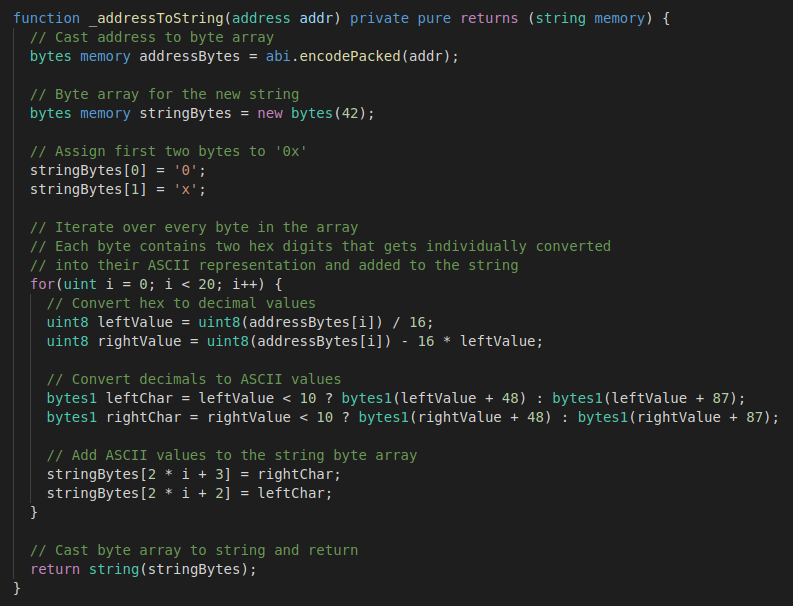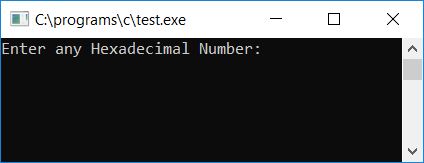
convert hex array to string in c
Turning Hexadecimal Arrays into Readable Text
Hey everyone! Ever feel like you're staring at a bunch of confusing numbers and letters, and you just want to see the actual words or symbols hidden inside? Like trying to decipher a secret code? We can make those confusing hexadecimal arrays into plain, normal text, and you will see!
Understanding Hexadecimal Arrays

Source: redd.it
First, let's talk about what hexadecimal arrays actually are. (It's like a special language for computers.) Imagine a message or file broken down into little pieces of numbers. These pieces, often represented using hexadecimal, tell the computer what characters and symbols are actually in it. A typical array looks like a table of hexadecimal numbers, right? (A bit like a table from a data structure.)
What are Hexadecimal Numbers?

Source: cheggcdn.com
Hexadecimal is a number system that uses 16 digits instead of 10 (0-9, plus A-F) , representing values 0 through 15. Computers work like that. You use this to deal with bits that are in your programs. It's handy, it’s very good! This means it's possible for hexadecimal arrays to make different values (different numbers)! (Imagine trying to speak 30 different language in this time)
Why Hexadecimal?
Why do computers use hex? Computers work best in base–2 (binary)! They find it more friendly. However, hexadecimal makes binary much more human-readable (that’s good news). Hex also helps with organizing and visualizing your information! It's also important because it makes calculations fast, which makes our work easier. (Like quick maths)
Converting Hexadecimal to Text

Source: geeksforgeeks.org
Now, how do you change these hexadecimal values into text?
Deciphering the Array
-
First thing you should look for: A HEX value isn't simply numbers it's code which converts to text. Take it step by step, look at a example if you get lost!
-
Grab every group: Divide that big collection of numbers into pairs. Look at it as smaller pieces, see? Treat each group as a number or character to look for.
-
Change to Decimal: Now you change each hexadecimal group to their decimal form to correspond. Convert (it takes less time than you imagine!) each group of two hex characters. Like, 'FF' changes to a special character, so look at how to get it to match to what you want (sometimes text).
-
Connecting back to text: Finally convert that to its equivalent letter or character. Match each converted value to their letter equivalent character from ASCII table.

Source: lib.rs
Example:
Let's say we have a hexadecimal array that contains these hexadecimal groups
[ '48' , '65' , '6C' , '6C' , '6F' , '21' ]
Now, the easy way is use an online conversion or create your conversion in a loop to help. (Using different programs). Here are some of the common ways used
-
Convert each hexadecimal pair ('48', '65', '6C', '6C', '6F', '21') into its corresponding decimal number:
` '48' --> 72 (Decimal)` `'65' --> 101 (Decimal)` `'6C' --> 108 (Decimal)` `'6C' --> 108 (Decimal)` `'6F' --> 111 (Decimal)` `'21' --> 33 (Decimal)` -
Then use an ASCII conversion tool or table to match those values with the actual letters and punctuation characters:
`72` → 'H' `101` → 'e' `108` → 'l' `108` → 'l' `111` → 'o' `33` → '!'
So what would be left? That's it! That's your plain text string! Hello! Your text array is "Hello!" (Your task is finished).
Source: codescracker.com
Practical Applications
Where else do we use hexadecimal arrays in the real world?
Hexadecimal representation of data is widely used in computers for storing and processing many things, for example:
-
Computer Graphics: Colors, images, and fonts often come as hexadecimal values.
-
Data Encoding: Special characters often saved as hexadecimal data (like unusual formatting or non-western symbols).
-
Database Files: You probably have encountered this too many times
-
Networking: Information transfer between networks uses hex codes.
Challenges and Potential Issues (Troubleshooting!)
During your process, here are a few problems you could encounter, as well as some helpful suggestions for dealing with them:
-
Wrong Conversion: Make absolutely sure you match those hex numbers to their right characters using an online converter. Mistakes like incorrect pairs of hex values or lookup error in tables will create chaos in your outcome (the program has a headache!) so check over your calculation
-
Non-ASCII: Be aware! Some hex codes will mean special characters.
-
Incomplete Information: What if a hex group is odd? or missing (You can look for this first when programming it manually)?
-
Code error: Be extremely careful when running a code from a website/external source and running on a site! Check out your program’s errors during development.
Conclusion (wrap-up)
You got this! Converting hex arrays into strings is pretty straightforward once you break it down, step by step. So don’t panic (no worries), take one step at a time! We can definitely work through this challenge and accomplish the result together! The computer does handle hexadecimal encoding for you usually. (it is very simple really). You know your strength, so show your talents and skills (show how well you handle yourself). It is important that you always verify everything from the codes (your calculations) and look at every little bit and corner of it (go deep!). Keep up your good work, I trust that you can!



